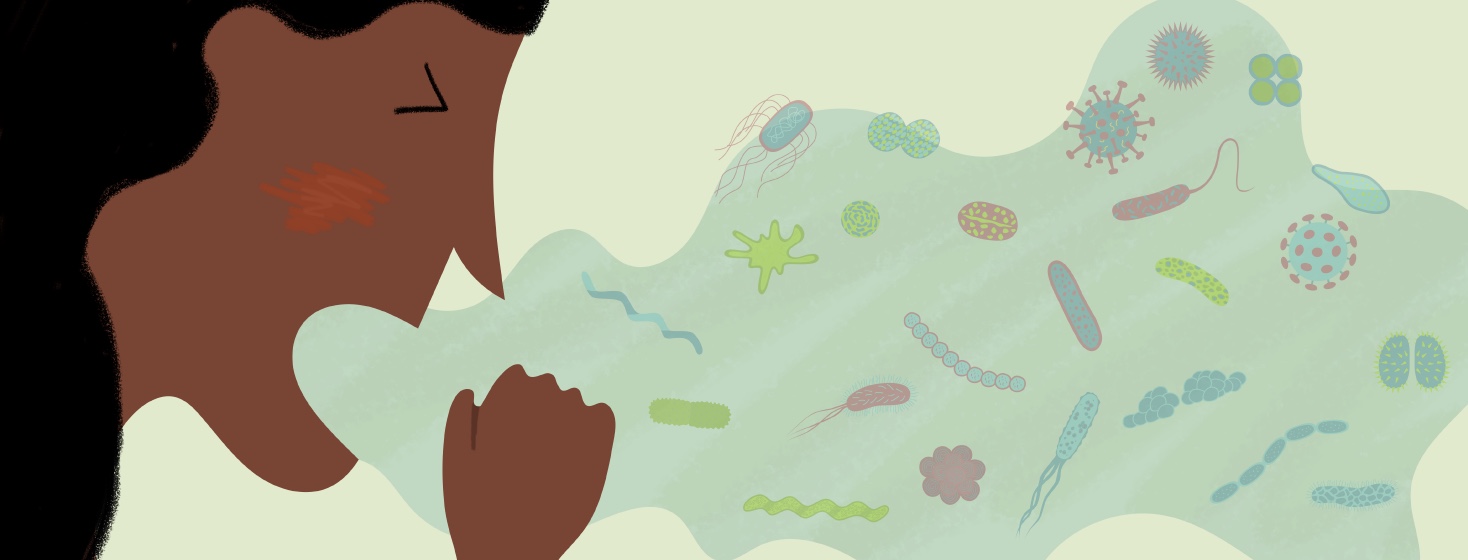Flu, RSV and COVID-19: Differences Between 3 Respiratory Infections
Reviewed by: HU Medical Review Board | Last reviewed: September 2022 | Last updated: December 2023
The flu, respiratory syncytial virus (RSV), and COVID-19 are all contagious respiratory infections that affect the nose, throat, and lungs. They affect both adults and kids, and they have many similar symptoms.1
That said, they also have differences. These differences can be subtle, making the infections hard to tell apart. Keep reading to learn more about the similarities and differences between these 3 common respiratory infections.1,2
They are caused by different viruses
The flu is caused by the influenza virus. RSV is caused by the respiratory syncytial virus. And COVID-19 is caused by SARS-CoV-2, a new coronavirus that emerged in 2019.1,2
Because it can be very hard to tell these respiratory infections apart, testing is vital. If you are having any of the symptoms listed below, get tested as soon as possible. Once you know which virus you are dealing with, you can take the necessary steps to treat the infection, feel better, and protect those around you.1
Symptoms can vary slightly
Symptoms of all 3 infections may include:1,2
- Cough
- Fever
- Runny nose
- Headache
But while they have many similar symptoms, each infection is unique. For example, a person with the flu is more likely to have a high fever than one with RSV. A person with RSV may experience breathing issues like wheezing. And people with COVID-19 more commonly report a sudden loss of taste and smell than those with the flu or RSV.2
Children who get COVID-19 have slightly different symptoms as well. These symptoms may include:3
- Red or purple toes (or fingers) that are swollen, known as COVID toes
- Red, swollen eyes
- Skin rashes
A small percentage of children who get COVID-19 are at risk for a life-threatening condition called multisystem inflammatory syndrome in children (MIS-C). If your child has any of the following symptoms, call their doctor immediately:3
- Fever
- Stomach pain
- Vomiting
- Diarrhea
- Rash
- Bloodshot eyes
COVID-19 symptoms can last longer
Flu and RSV symptoms usually go away after the virus has moved through the body. But with COVID-19, symptoms can linger. This is known as "long COVID."1,2,4
According to data gathered by the Centers for Disease Control and Prevention (CDC), symptoms of COVID-19 can last many weeks and sometimes several months after a person is infected with the virus.4
Treatments differ
If you suspect you have the flu, see your doctor. They may prescribe Tamiflu®, a medicine that can help reduce the amount of time you are sick with the flu.1
If you test positive for RSV, make sure to get lots of rest and drink lots of fluids. While there is currently no specific treatment for RSV, you can take over-the-counter medicines like ibuprofen and acetaminophen to manage fever and pain. Before taking any medicines or giving any medicines to your child, check with your doctor first. Never give aspirin to a child.5
Most people who test positive for COVID-19 are able to recover at home with plenty of rest and fluids. For people who are at higher risk of severe illness, such as older adults and people with a chronic medical condition, a medicine called Paxlovid™ can lower the likelihood of hospitalization. Other medicines such as Veklury®, Olumiant®, and Actemra® also can be used for treatment.6-10
Talk with your doctor about which treatment they advise based on your overall health and medical history.
Diagnosing respiratory infections
The only way to know whether you have the flu, RSV, or COVID-19 is to get tested. At-home COVID tests are a great first step if you have any symptoms. There are currently no at-home tests for flu or RSV, but many health clinics offer tests for all 3 of these respiratory infections. Your regular doctor also can test you for all 3 infections.1
Preventing respiratory infections
For those with chronic health conditions like asthma, chronic obstructive pulmonary disease (COPD), heart failure, or type 2 diabetes, protecting yourself from respiratory infections is crucial. The most important step you can take is to get vaccinated for the flu, COVID-19, and RSV.1,2,5,6,11
Vaccines are available for all 3 infections. As of 2023, RSV vaccines are available for pregnant people who are 32 to 36 weeks pregnant to protect infants, as well as adults over age 60. An RSV preventive antibody has also been licensed and recommended for infants and some young children.11
Here are some additional precautions you can take to reduce your chances of getting the flu, RSV, or COVID-19:1,2,5
- Avoid close contact with anyone who is sick.
- Wash your hands often with soap and water for at least 20 seconds.
- Avoid touching your eyes, nose, and mouth with unwashed hands.
- Clean and disinfect surfaces regularly.
- Use a tissue to cover your mouth and nose when coughing or sneezing, then throw away the tissue.
- Stay at home if you are sick.

Join the conversation